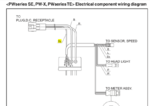bob armani
Well-Known Member
800$ for a 36v battery with only 500wh ?? That’s such a big rip off....and with shipping will probably amount to ~ 850$.
A Stomer 986wh pack, 48volts is 1.2k and that’s a high end quality pack.
Another example- my own- BH - A top ebike manufacturer , has a 605wh pack, 48v -750$ -this is also a high end battery pack with 2year warranty.
For a 36v max. Should be 350-400$. Unfortunately a lot of customers are not educated about the ebike technology and many companies are basically ripping people off and colluding to have the prices artificially high.
A 36 v battery cell is 3$. 35cells in the 500wh pack is 105$. Add Bms and a couple of wires.
Then add a 6-700$ profit. Nice reciepe for corporate greed !! Congratulations ?.
It is probably no different than (for example) what the drug companies are doing with inflating prices on the same drugs found in other countries at a fraction of the cost.
Those are good comparisons for battery costs, however the 36V batteries at $400 is probably for rebuilds or repacking. The only problem with repacking is the difficulty with shipping Hazmat or DG goods. The shipper has to be certified to package and ship your battery to the repacking company.


